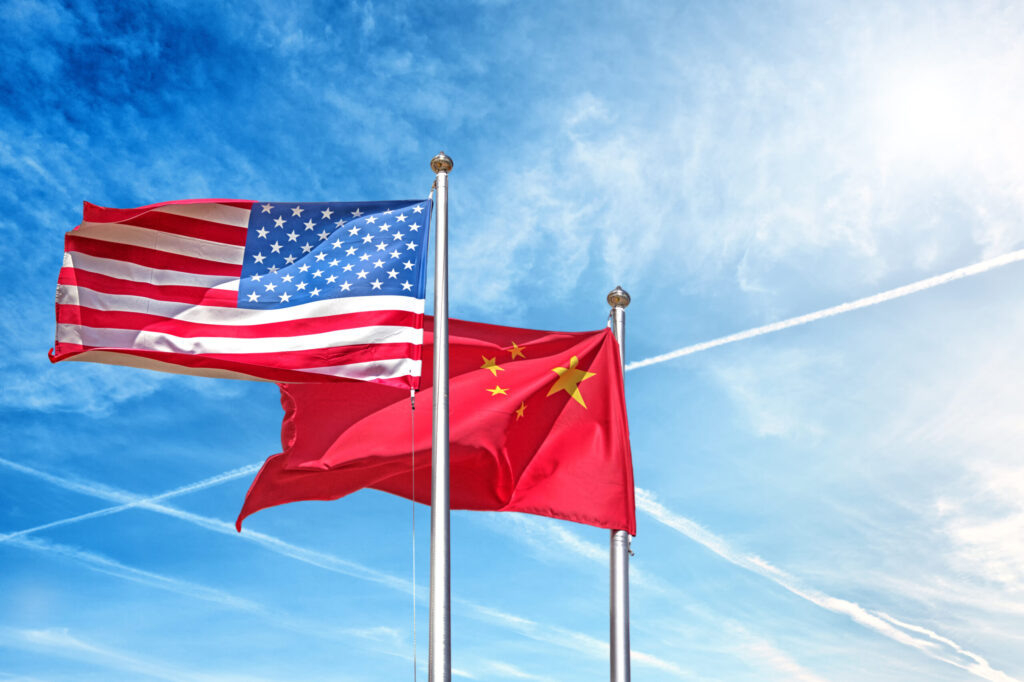Enhancing U.S. Economic Growth through Competitive Tax Policy: A Comparative Analysis with China
Key Findings
The competition with China is a prevailing theme in American politics, focusing significantly on overall economic growth. A critical factor influencing this growth is the structure of the corporate tax system, which impacts investment and productivity. Historically, a broad pro-investment tax policy has fostered higher investment and productivity rates. However, industry-specific policies can often merely shift existing investments rather than stimulate new growth.
China currently offers better tax incentives for investment and far larger subsidies compared to the U.S., particularly with its super deduction for research and development (R&D). In contrast, the U.S. faces a phase-out of full cost recovery for machinery and equipment, new R&D tax penalties, and a corporate tax rate higher than China’s.
Restoring full expensing for R&D and capital investments, extending cost recovery to structures, and avoiding corporate tax rate hikes could strengthen U.S. economic growth. Improved tax policy might increase U.S. economic output by 1.7% and capital stock by 3.3%, costing about half of what is allocated for green energy tax credits under the Inflation Reduction Act and CHIPS Act.
Better tax policies alone won’t resolve all security-related economic issues with China. However, they can enhance the U.S.’s capacity to address these challenges.
Introduction
Global competition with China is a defining issue in U.S. politics, influencing policies from trade tariffs initiated under President Trump to signature economic measures like the Inflation Reduction Act and the CHIPS Act under the Biden administration. The competition, while strongly geopolitical and military, is fundamentally rooted in economic strength. The U.S. remains the world’s largest economy, but China, rapidly closing the gap since surpassing Japan in 2010, is the sole rival at the same tier of economic output.
Economic size supports potential military investments, influences global markets, and carries diplomatic weight. Our analysis focuses on a critical aspect of this economic rivalry: the design of tax policies. As the debate around the 2017 tax law expirations gains momentum, lawmakers should focus on improving investment cost recovery — supporting full expensing for R&D, machinery, and equipment and accelerating write-offs for structures.
How Do the U.S. and Chinese Economies Compare?
The U.S., larger in both GDP and per capita income, accounted for 43% of the global GDP in 2023, alongside China. U.S. workers are significantly more productive, boasting a higher output per hour worked than their Chinese counterparts, though China leads in sheer manufacturing output since 2010.
The U.S. is the world’s chief importer and second-largest exporter of goods, following China. Despite trade deficits, macroeconomic factors, not trade policies, drive these gaps without impacting GDP growth or employment.
Both nations face shifts from manufacturing to service-driven economies. American manufacturing productivity growth has slowed since the Great Recession, contrasting with China’s robust industrial support despite a growing service sector.
In advanced industries, the U.S. maintains an R&D leadership, spending a larger GDP share on R&D compared to China’s lesser, yet growing, allocation. While China excels in tangible output in several industries, innovation leadership remains contestable.
How Do the U.S. and Chinese Tax Systems Compare?
Tax structures have profound effects on economic behavior. The U.S. heavily taxes income, including from individuals and businesses, as opposed to China’s reliance on consumption taxes. Despite China’s broader tax incentives and consumption-centric approach, both nations possess significant fiscal federalism.
The U.S.’s reliance on income taxes generally harms growth more than consumption taxes, which China utilizes extensively — contributing to its competitive investment environment.
U.S. vs. Chinese Corporate Tax Systems
Corporate taxes significantly influence investment incentives. China’s standard 25% corporate income tax includes extensive incentives and exemptions, while the U.S. struggles with higher rates when combining federal and state levels. The phase-out of key deductions exacerbates the cost burden on U.S. investments.
Reinstating depreciation benefits and full expensing for R&D investments could bolster U.S. competitiveness. Notably, China’s super deduction for R&D underscores its aggressive tax incentives for innovation.
Improving U.S. Tax Competitiveness
Robust economic growth relies on capital investment and technological progression. Current U.S. tax codes penalize marginal investment, affecting business capacity expansion. Offering full cost recovery could significantly enhance the U.S. economy with long-term output gains and expanded employment, justified even with half the fiscal spending of recent industrial policies.
While U.S. security demands may necessitate excess capacity in defense-related sectors, tax policy improvements ensure strategic economic capacity without the pitfalls of overcapacity fears.
Conclusion
While the U.S. and China employ industrial policies, history shows mixed success. The U.S. should focus on broad-based rules that elevate investment, innovation, and growth. Tax policies, a crucial part of economic strategy, must ensure adequate capital cost deductibility to maintain competitiveness.
As tax reform deliberations progress, sustaining investment incentives and ensuring competitive tax treatments will fortify America’s global economic positioning. Engage with us by subscribing to further insights on evolving tax policies.



